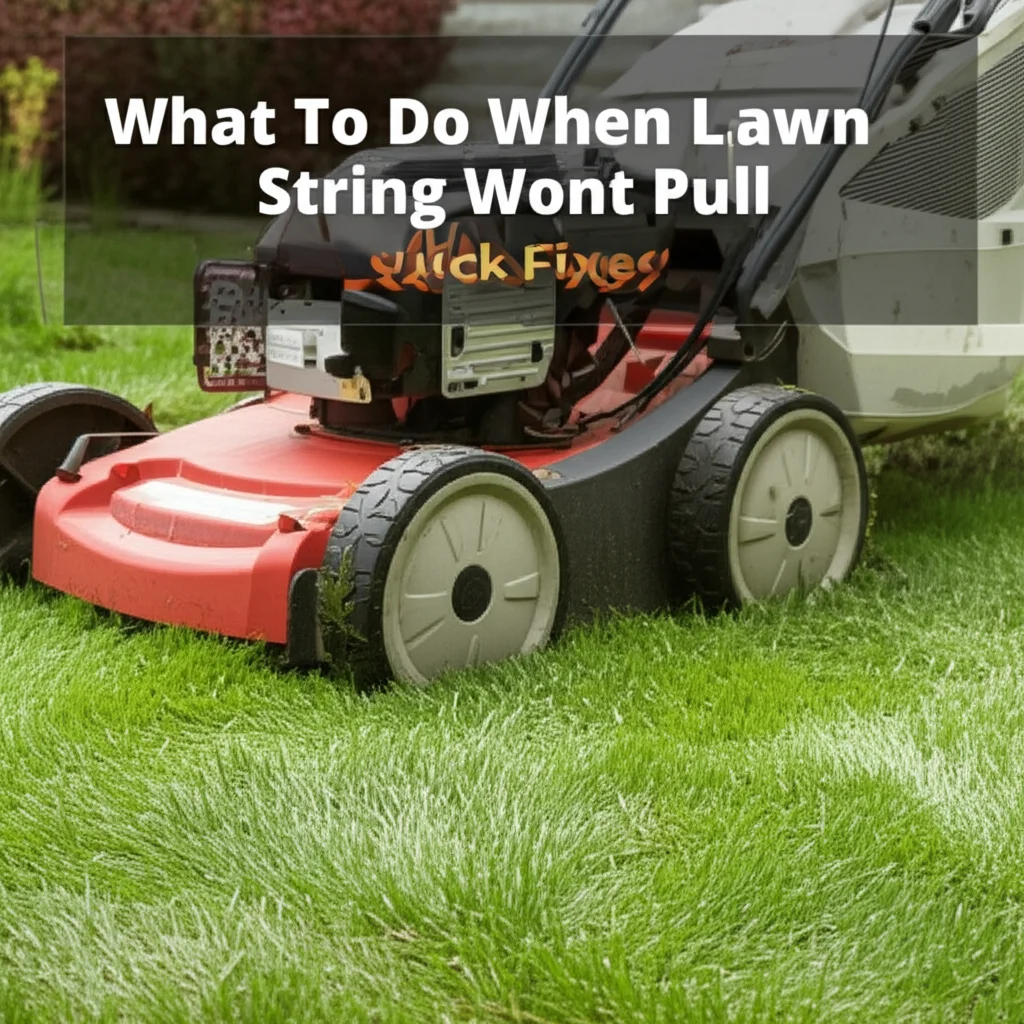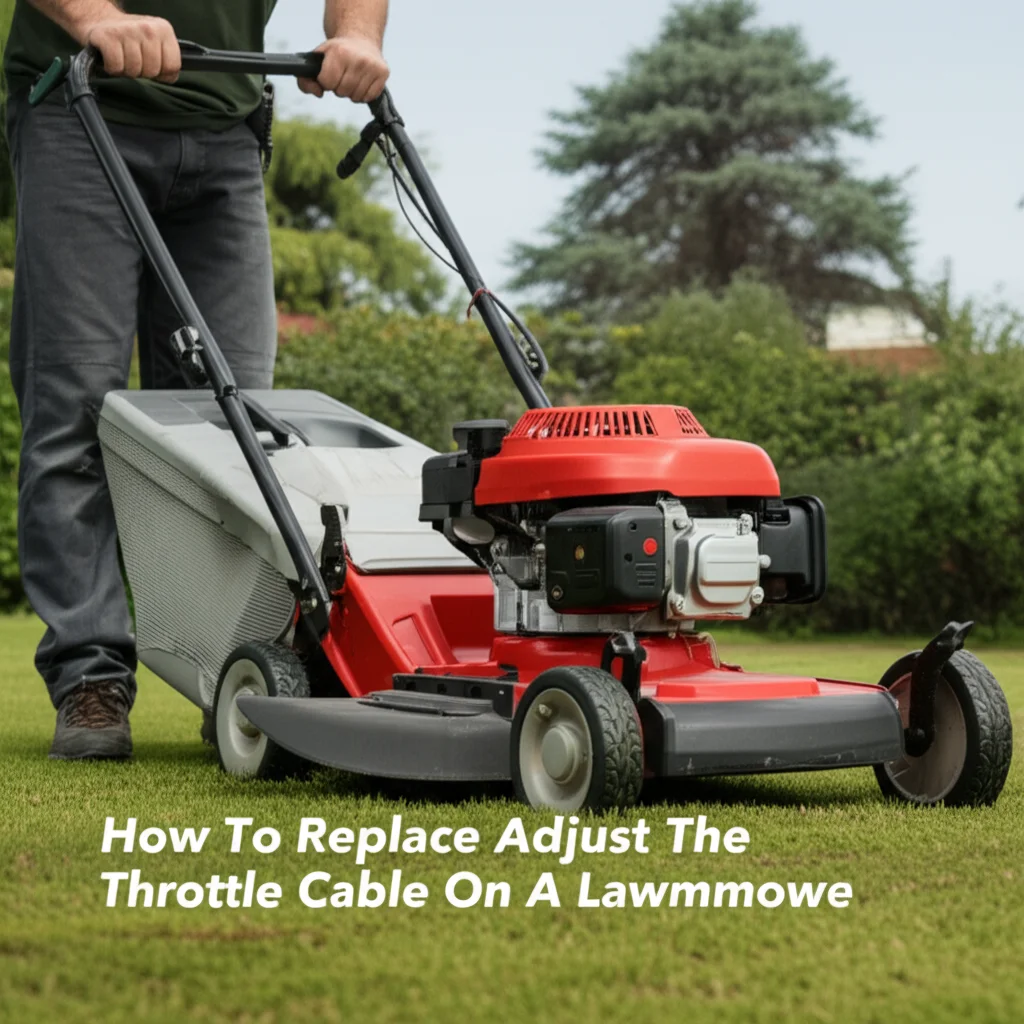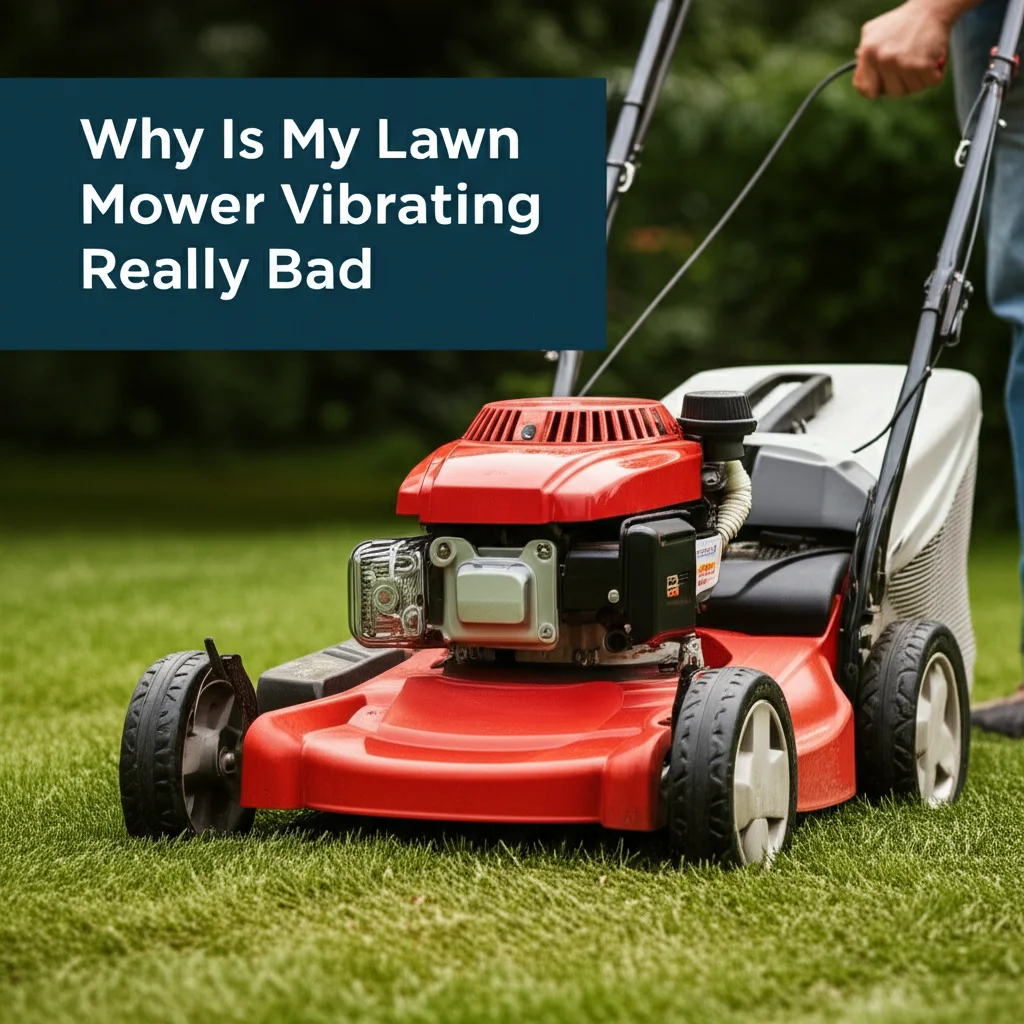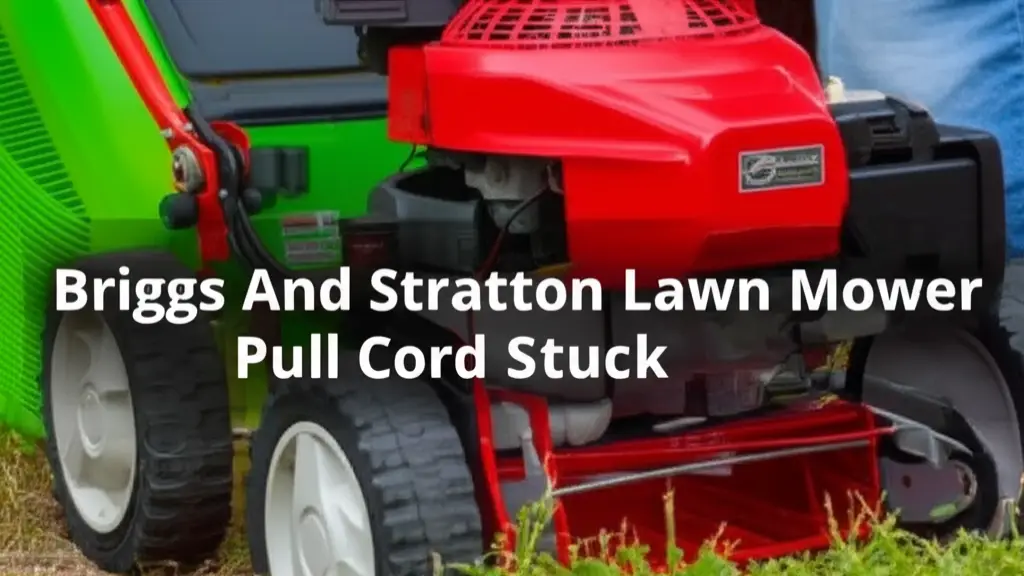· Lawn Mower Maintenance · 7 min read
What To Do When Lawn Mower String Wont Pull Quick Fixes

Why Won’t My Lawn Mower String Pull? Simple Solutions
Is your weekend mowing plan stalled because the lawn mower string won’t pull? It’s a common frustration! A non-retracting or stuck pull cord can quickly derail your yard work. Fortunately, many issues are simple to diagnose and fix yourself, saving you a trip to the repair shop. This article will walk you through the most common reasons why your lawn mower string won’t pull and provide quick fixes to get you back to cutting grass. We’ll cover everything from simple obstructions to more involved repairs, ensuring you have the knowledge to tackle this problem head-on.
Takeaway:
- Check for obstructions in the starter housing.
- Lubricate the pull cord and recoil mechanism.
- Inspect the pull cord for damage and replace if necessary.
- Ensure the recoil assembly is properly aligned.
Quick Answer:
If your lawn mower string won’t pull, first check for debris blocking the starter housing. Next, try lubricating the cord and recoil mechanism with silicone spray. If that doesn’t work, inspect the cord for fraying or breakage and consider replacing it.
1. Obstructions in the Starter Housing: The First Check
Often, the simplest explanation is the correct one. A common reason your lawn mower string won’t pull is an obstruction within the starter housing. Grass clippings, dirt, or even small twigs can accumulate and jam the mechanism. Before diving into more complex fixes, take a moment to visually inspect the area around the pull cord.
To check for obstructions:
- Carefully remove the starter housing cover (refer to your mower’s manual for instructions).
- Use a flashlight to thoroughly examine the inside of the housing.
- Remove any visible debris with your hand or a small tool.
- Once clear, reassemble the cover and test the pull cord.
Keeping your lawn mower clean, including regular cleaning of the housing, can prevent this issue. You can find more detailed cleaning instructions here.
2. Lubrication is Key: Loosening Things Up
Even without visible obstructions, friction can prevent the pull cord from moving freely. The recoil mechanism, responsible for retracting the cord, needs lubrication to function smoothly. Over time, this mechanism can become dry and sticky, making it difficult to pull the string.
Here’s how to lubricate the pull cord:
- Apply a silicone-based lubricant (avoid oil-based lubricants, as they can attract dirt) directly to the pull cord where it enters the starter housing.
- Gently pull the cord several times to distribute the lubricant throughout the recoil mechanism.
- Wipe away any excess lubricant to prevent it from attracting debris.
- Test the pull cord to see if it moves more freely.
Regular lubrication, especially before and after the mowing season, can significantly extend the life of your mower’s starting system.
3. Inspecting the Pull Cord for Damage: Fraying and Breaks
The pull cord itself can be the culprit. Constant use and exposure to the elements can cause the cord to fray, weaken, or even break. A damaged cord won’t retract properly and can be difficult or impossible to pull.
To inspect the pull cord:
- Remove the starter housing cover.
- Carefully pull the cord all the way out.
- Examine the entire length of the cord for any signs of fraying, cracking, or breakage.
- If the cord is damaged, it needs to be replaced.
Replacing a pull cord is a relatively straightforward repair, and replacement cords are readily available at most hardware stores.
4. Recoil Assembly Alignment: Ensuring Proper Function
The recoil assembly is the heart of the pull-start system. If it’s misaligned, the pull cord won’t engage properly, and you’ll struggle to start your mower. Misalignment can occur due to accidental impacts or during previous repairs.
Here’s how to check the recoil assembly alignment:
- Remove the starter housing cover.
- Visually inspect the recoil assembly to ensure it’s centered within the housing.
- Check that the pulley wheel is aligned with the crankshaft.
- If the assembly is misaligned, carefully reposition it and secure it properly.
If you’re uncomfortable working with the recoil assembly, it’s best to consult a professional.
5. Pawls and Ratchet: The Locking Mechanism
Inside the recoil assembly are pawls, small metal pieces that engage with a ratchet to lock the cord in place when pulled. If these pawls are dirty, sticky, or damaged, they may not engage properly, preventing the cord from retracting.
To check the pawls:
- Remove the recoil assembly (refer to your mower’s manual).
- Inspect the pawls for dirt, rust, or damage.
- Clean the pawls with a solvent and a small brush.
- If the pawls are damaged, they may need to be replaced.
Properly functioning pawls are crucial for a reliable pull-start system.
6. Frozen or Seized Engine: A More Serious Issue
While less common, a frozen or seized engine can also prevent the pull cord from moving. This usually happens if the engine has been sitting for a long time, or if oil has leaked into the combustion chamber.
Signs of a seized engine include:
- The pull cord feels completely locked.
- The engine won’t turn over even with significant force.
- Unusual noises when attempting to start the engine.
If you suspect a seized engine, it’s best to consult a qualified mechanic. Attempting to force the engine to turn over can cause further damage. Before tackling engine issues, ensure your mower is generally clean. A clean mower is a happy mower! You can learn more about general lawn mower cleaning here.
7. Cleaning the Air Filter: Improving Engine Performance
A clogged air filter can restrict airflow to the engine, making it harder to start and potentially contributing to starting issues. While not directly related to the pull cord, a clean air filter ensures the engine runs efficiently, which can indirectly help with starting.
To clean the air filter:
- Locate the air filter housing (refer to your mower’s manual).
- Remove the air filter.
- Clean the filter with soap and water or replace it if it’s heavily soiled.
- Reinstall the clean air filter.
Regular air filter maintenance is essential for optimal engine performance. You can find a guide on how to clean your lawn mower’s air filter here.
Frequently Asked Questions (FAQ)
Q: How often should I lubricate the lawn mower pull cord? A: Lubricate the pull cord at least once a year, ideally before the start of the mowing season. If you use your mower frequently, consider lubricating it every few months to keep it functioning smoothly.
Q: Can I use WD-40 on the lawn mower pull cord? A: While WD-40 can temporarily loosen things up, it’s not a long-term solution. It attracts dirt and can eventually gum up the mechanism. Silicone-based lubricants are a better choice.
Q: What if the pull cord breaks completely? A: A broken pull cord needs to be replaced. You can purchase a replacement cord and install it yourself, or take your mower to a repair shop.
Q: How do I know if the recoil assembly is bad? A: If the recoil assembly is damaged, it may not retract the pull cord properly, or it may feel loose or wobbly. If you suspect the assembly is bad, it’s best to have it inspected by a professional.
Q: Is it safe to try and fix the pull cord myself? A: Yes, many pull cord repairs are relatively simple and can be done safely at home. However, always disconnect the spark plug before working on your mower to prevent accidental starting.
Conclusion: Getting Back to Mowing
A lawn mower string that won’t pull can be a frustrating problem, but it’s often a simple fix. By systematically checking for obstructions, lubricating the mechanism, inspecting the cord for damage, and ensuring proper alignment, you can often get your mower started again quickly. Remember to prioritize safety and consult a professional if you’re uncomfortable with any of the repairs. Don’t let a stubborn pull cord keep you from enjoying a well-maintained lawn! Keeping your lawn mower in good working order, including addressing issues like a non-pulling string, will save you time and money in the long run.
- lawn mower repair
- pull cord
- starter rope
- lawn mower maintenance
- quick fix




